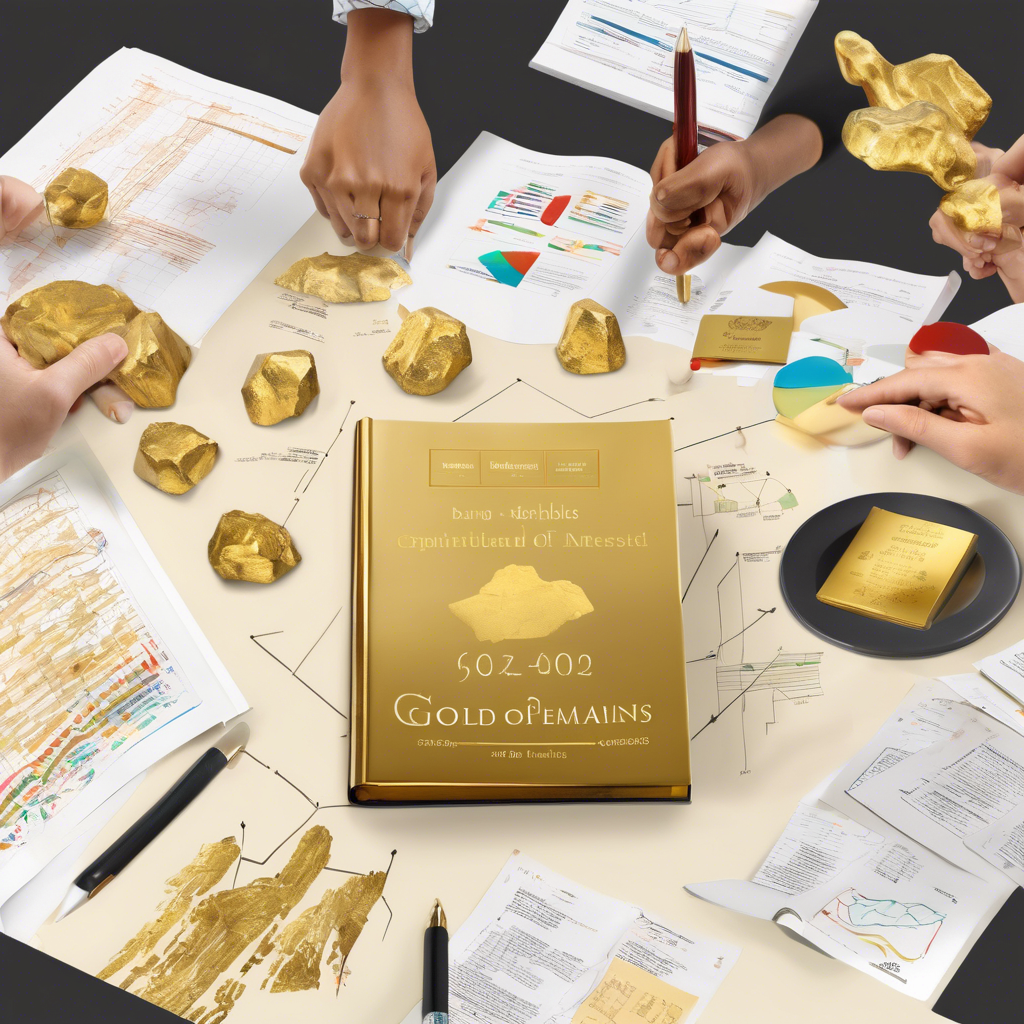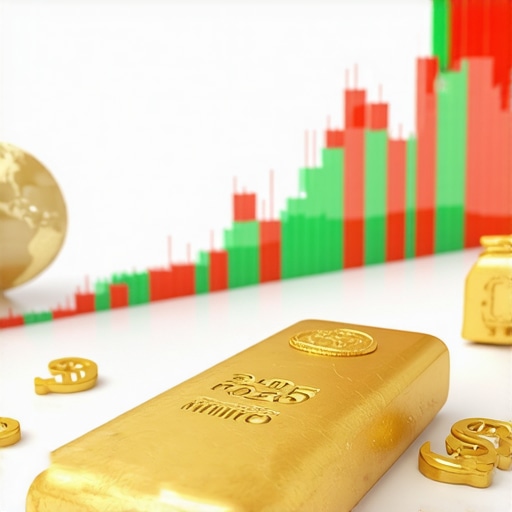Understanding Gold Demand Trends: The Basics
As a timeless asset, gold has been a cornerstone of economic stability and investment portfolios for centuries. However, the dynamics surrounding gold demand trends are continuously evolving, influenced by various global factors, investor behavior, and market conditions. Understanding these trends is crucial for anyone looking to invest in gold or assess its role in a diversified portfolio.
The demand for gold can be categorized into several key segments: jewelry, investment, and industrial use. Each of these categories reflects different economic conditions and consumer behaviors. For instance, during times of economic uncertainty, the demand for gold as a safe-haven asset often increases significantly. This has been evident in recent market fluctuations, where investors turn to gold to hedge against inflation and currency devaluation.
Shifts in Consumer Behavior: Analyzing Current Trends
In recent years, there has been a noticeable shift in gold demand patterns. Factors such as digitization, changing consumer preferences, and global economic uncertainties have reshaped how and why individuals and institutions invest in gold. For example, the rise of gold-backed ETFs (Exchange Traded Funds) has made it easier for investors to gain exposure to gold without the need to physically hold the metal.
Moreover, emerging markets, particularly in Asia, have shown a growing appetite for gold. Countries like China and India are not only significant consumers of gold for jewelry but are also increasing their gold reserves as a strategic economic move. This demand from developing nations has the potential to drive global gold prices higher, influencing overall market trends.
The Role of Technology in Gold Investment
Technology is playing an increasingly pivotal role in shaping gold investment strategies. Online platforms and mobile applications have streamlined the purchase and sale of gold, allowing investors to engage with the market more easily. Additionally, advancements in blockchain technology have introduced new ways to invest in gold, providing transparency and security for investors.
Investors can now access real-time data on gold prices, trends, and market analysis, enabling them to make informed decisions. This accessibility has democratized gold investment, drawing in a younger demographic that might have previously overlooked this traditional asset class. For those interested in a more hands-on approach, understanding the mechanics of analyzing the gold market is essential.
Global Economic Factors Influencing Gold Demand
The demand for gold is also significantly influenced by macroeconomic factors. Interest rates, inflation rates, and geopolitical tensions can all affect gold prices. For instance, when interest rates are low, the opportunity cost of holding gold decreases, making it a more attractive investment. Conversely, as central banks raise interest rates to combat inflation, gold may lose some of its appeal as a non-yielding asset.
Another critical factor is the ongoing geopolitical landscape. Events such as trade wars, political instability, and conflicts can lead to increased demand for gold as investors seek safety. Understanding how these global events influence gold market dynamics is essential for predicting future trends.
In conclusion, as we explore the shifting gold demand trends, it becomes clear that a multitude of factors is at play. By staying informed about these dynamics, investors can better navigate the complexities of the gold market and make strategic investment decisions.
Exploring Gold Supply Dynamics: Understanding the Market
The gold supply dynamics play a crucial role in shaping market trends. Gold is mined from various locations worldwide, and the production levels can fluctuate based on factors such as mining costs, environmental regulations, and geopolitical stability in producing regions. Countries like Australia, China, and Russia lead in gold production, making their output vital for global supply.
In recent years, there has been a significant discussion around sustainable mining practices. Investors are increasingly concerned about ethical investing, which includes the environmental impact of gold mining. As a result, companies that prioritize sustainability are becoming more attractive to socially conscious investors.
Recycling and Its Impact on Gold Supply
Another essential aspect of gold supply is recycling. The recycling of gold from old jewelry and electronics contributes significantly to the overall supply. This process not only helps to mitigate the depletion of natural resources but also provides a more sustainable source of gold for the market. Understanding the impact of recycling on gold prices can offer valuable insights for investors.
Gold Demand Projections: What to Expect in 2025
Looking ahead, projections for gold demand in 2025 indicate a continuing trend toward increased consumption, particularly in emerging markets. As economies like India and China expand, the demand for gold, particularly for jewelry and investment purposes, is expected to rise. This anticipated growth will likely put upward pressure on gold prices, making it a key area of focus for investors.
Additionally, the ongoing trend of gold as a hedge against inflation remains relevant. As inflation rates fluctuate, many investors are likely to turn to gold as a protective measure. This demand is further fueled by the global uncertainty stemming from economic policies and geopolitical tensions.
The Influence of Central Banks on Gold Demand
Central banks around the world are increasingly adding gold to their reserves, which has a profound effect on overall demand. This trend reflects a widespread recognition of gold’s value as a safe-haven asset. Understanding how central banks influence gold demand can provide investors with critical insights into potential market movements.
Investment Strategies: Navigating Gold Market Opportunities
For investors looking to capitalize on these trends, developing a robust investment strategy is essential. Whether through physical gold, gold ETFs, or gold stocks, understanding the nuances of each investment vehicle is crucial. For beginners, learning about the best practices for gold investments can lead to more informed decision-making.
Furthermore, diversifying investments within the gold sector can also mitigate risks. For example, combining investments in gold bullion with gold mining stocks can provide a balanced approach, allowing investors to benefit from both price appreciation and company performance.
Monitoring Gold Price Trends: Tools and Techniques
Investors should also stay updated on the latest tools and techniques for monitoring gold price trends. Utilizing analytical tools and market reports can help in making informed decisions. Websites that provide gold market analysis, such as gold market analysis, can be invaluable resources.
In summary, understanding the complex interplay of demand and supply dynamics in the gold market is essential for successful investment. By keeping abreast of trends and utilizing strategic investment approaches, investors can navigate the gold market more effectively, ultimately enhancing their portfolios.
Maximizing Returns in Gold Investments: Key Strategies
Investing in gold can be highly lucrative when approached with the right strategies. To maximize returns, investors should consider a diversified portfolio that includes various gold formats. This could range from physical gold, such as bullion and coins, to financial instruments like gold ETFs and mining stocks. Each of these options presents unique benefits and risks, making it essential to understand their roles in an investment strategy.
One effective approach is to allocate a percentage of your overall investment portfolio to gold. Financial experts often suggest that 5-10% of your portfolio should be in gold or gold-related assets. This allocation can serve as a hedge against inflation and economic downturns, providing stability during volatile market conditions.
Understanding Gold Stocks and Mutual Funds
Gold stocks and mutual funds are alternative investment vehicles that can provide exposure to the gold market without the need to purchase physical gold. Investing in gold stocks allows investors to capitalize on the operational performance of mining companies. Conversely, gold mutual funds pool resources from multiple investors to invest in a basket of gold-related assets, which can help mitigate risks associated with individual stocks.
Moreover, it’s crucial to analyze the performance metrics of gold mining companies, including production costs, reserves, and management effectiveness. Understanding these factors can provide insights into which companies might yield the highest returns as gold prices fluctuate.
Gold as a Hedge: Why Investors Turn to Gold
In times of economic uncertainty, many investors turn to gold as a hedge against inflation and currency devaluation. The intrinsic value of gold often remains stable, making it an attractive option for preserving wealth. Historical data indicates that during periods of high inflation, gold prices tend to rise, reinforcing its role as a safe-haven asset.
Additionally, geopolitical tensions can further enhance gold’s appeal. For instance, during conflicts or economic crises, demand for gold typically increases as investors seek security. This makes understanding global events and their potential impact on gold prices essential for any investor aiming to navigate the market effectively.
Gold IRA Options for Long-Term Wealth Building
For those looking to incorporate gold into their retirement plans, exploring gold IRA options is a prudent strategy. A Gold IRA allows investors to hold physical gold in a tax-advantaged retirement account. This can be an excellent way to diversify retirement savings while taking advantage of gold’s long-term appreciation potential. However, it’s essential to understand the rules and regulations surrounding gold IRAs to ensure compliance.
Investors should also consider the types of gold that are eligible for IRA inclusion, such as specific coins and bullion bars, to align with IRS guidelines. Consulting with a financial advisor who specializes in precious metals can provide valuable insights and help navigate this complex area of investing.
Monitoring Market Trends: Tools for Successful Investing
Staying informed about market trends is crucial for making timely investment decisions. Utilizing resources that offer gold market analysis can help investors track price movements and anticipate shifts in demand. Economic indicators, such as inflation rates and interest rates, also play a significant role in influencing gold prices. By monitoring these indicators, investors can better position themselves to take advantage of market opportunities.
Moreover, subscribing to newsletters or following reputable financial news outlets can provide ongoing insights into emerging trends and expert opinions. Engaging with online communities focused on gold investing can also enhance knowledge and offer support from fellow investors.
In summary, understanding the dynamics of investing in gold requires a multifaceted approach that encompasses various investment options, market analysis, and strategic planning. By leveraging the right tools and knowledge, investors can enhance their portfolios and navigate the complexities of the gold market with greater confidence.
Exploring Gold Trading Techniques for 2025
As we move into 2025, understanding effective gold trading techniques becomes paramount for investors looking to capitalize on market opportunities. The gold market is influenced by a myriad of factors, including geopolitical events, economic data releases, and shifts in investor sentiment. To navigate these complexities, it’s essential to employ a strategic approach to trading gold.
One of the key techniques involves utilizing technical analysis to identify price trends and potential reversal points. Charts and indicators such as moving averages, RSI (Relative Strength Index), and Fibonacci retracement levels can offer valuable insights for traders. By analyzing historical price movements, traders can make informed predictions about future price behaviors.
The Importance of Fundamental Analysis
While technical analysis offers insights into price trends, understanding the fundamental factors affecting the gold market is equally important. Economic indicators such as inflation rates, interest rates, and employment data can significantly influence gold prices. For instance, rising inflation often leads to increased demand for gold as a hedge, while higher interest rates may decrease its appeal.
Additionally, geopolitical events, such as conflicts or trade tensions, can drive investors towards gold, further impacting prices. Keeping abreast of global news and economic reports will help gold traders make timely decisions based on current market conditions. For a deeper understanding of the economic factors affecting gold, you might find our article on how central banks influence the gold market particularly insightful.
Risk Management Strategies for Gold Traders
Effective risk management is crucial for successful gold trading. Investors should establish clear stop-loss orders to limit potential losses on their trades. This involves setting a predetermined price point at which a trade will automatically close if it goes against the investor’s expectations.
Moreover, diversifying investments across various gold-related assets can help mitigate risks. For example, combining physical gold investments with gold stocks or ETFs can create a balanced portfolio. This approach not only spreads risk but also positions investors to benefit from different market dynamics. To learn more about how to build a diverse gold portfolio, consider our guide on diversifying your portfolio with gold stocks and mutual funds.
Utilizing Gold ETFs for Trading Flexibility
Gold ETFs (Exchange-Traded Funds) have gained popularity due to their liquidity and ease of trading. These funds allow investors to gain exposure to gold prices without needing to physically own the metal. For traders looking for flexibility, ETFs can be an excellent choice, enabling quick entry and exit from positions.
Investors should, however, be mindful of the expense ratios associated with ETFs, as these can eat into profits over time. Understanding the structure and performance of different gold ETFs can help traders select the most suitable options for their investment strategies. Our article on navigating gold ETFs provides a comprehensive overview of what new investors need to know.
Long-Term vs. Short-Term Gold Trading Strategies
Gold trading can be approached from both short-term and long-term perspectives. Short-term trading, often referred to as day trading, involves making quick trades to capitalize on minor price fluctuations. This strategy requires constant market monitoring and a firm understanding of market trends.
Conversely, long-term trading focuses on holding positions for extended periods, allowing traders to benefit from overall market trends rather than daily price movements. This strategy is often less stressful and requires less frequent monitoring. Investors considering a long-term approach should explore our comprehensive guide to buying gold to understand the fundamentals of building a long-term gold investment strategy.
The Future of Gold Trading: Trends to Watch
As we look ahead, several trends are likely to shape the future of gold trading. The rise of digital currencies and the growing interest in blockchain technology may impact how investors view gold as a safe-haven asset. Additionally, the increasing focus on sustainable investing could influence gold mining practices and investor preferences.
Furthermore, technological advancements in trading platforms and tools will continue to enhance the trading experience, offering investors more resources to make informed decisions. Keeping an eye on these trends will be essential for traders aiming to stay ahead in the evolving gold market.
Conclusion: Strategies for Successful Gold Trading in 2025
In conclusion, mastering gold trading techniques in 2025 requires a thorough understanding of both technical and fundamental analysis, effective risk management strategies, and an awareness of emerging trends. Whether you choose to engage in short-term trading or adopt a long-term investment strategy, equipping yourself with the right knowledge and tools will enhance your chances of success in the gold market. Remember, investing in gold is not just about navigating market fluctuations; it’s about building a resilient portfolio that can withstand economic uncertainty and deliver strong returns.
Frequently Asked Questions about Gold Trading
What are the best strategies for gold trading?
The best strategies for gold trading include a combination of technical analysis, fundamental analysis, effective risk management, and staying updated with market trends. Traders often utilize tools such as moving averages, RSI, and Fibonacci levels while also monitoring economic indicators and geopolitical events.
How does inflation affect gold prices?
Inflation typically leads to higher gold prices as investors seek gold as a hedge against currency devaluation. When inflation rises, the purchasing power of money decreases, making gold a more attractive investment as it retains value.
Is gold trading suitable for beginners?
Yes, gold trading can be suitable for beginners, but it’s essential for new traders to educate themselves about market dynamics, trading strategies, and risk management techniques. Starting with a demo account or small investments can help beginners gain experience without significant financial exposure.
What role do gold ETFs play in trading?
Gold ETFs provide a convenient way for investors to gain exposure to gold prices without owning physical gold. They offer liquidity and flexibility for trading but come with management fees that traders should consider. ETFs track the price of gold and can be traded on stock exchanges like shares.
How can I effectively manage risk in gold trading?
Effective risk management in gold trading involves setting stop-loss orders, diversifying investments across different gold-related assets, and only risking a small percentage of your capital on each trade. Regularly reviewing and adjusting your strategy can also help mitigate risks.
What are the long-term prospects for gold investment?
The long-term prospects for gold investment remain strong due to its status as a safe-haven asset during economic uncertainty and inflationary periods. Additionally, increasing global demand for gold in various industries and investment sectors can bolster its value over time.
How does geopolitical instability impact gold prices?
Geopolitical instability often drives investors towards gold as a safe-haven asset, leading to increased demand and rising prices. Events such as wars, trade tensions, and political crises can create uncertainty in financial markets, prompting a flight to gold.
What is the difference between short-term and long-term gold trading?
Short-term gold trading, often known as day trading, focuses on quick trades to profit from minor price fluctuations, requiring active market monitoring. Long-term gold trading involves holding positions for extended periods, allowing traders to benefit from overall market trends rather than daily price movements.
Are there any reputable resources for learning about gold trading?
Yes, there are several reputable resources for learning about gold trading, including books, online courses, financial news websites, and dedicated investment forums. Websites such as Investopedia and Kitco offer valuable insights into gold trading strategies and market analysis.
Conclusion: Your Path to Successful Gold Trading in 2025
In conclusion, mastering gold trading techniques in 2025 requires a multifaceted approach, encompassing technical and fundamental analysis, solid risk management strategies, and an awareness of market trends. By utilizing the insights and strategies discussed, traders can enhance their chances of success. Whether focusing on short-term trades or adopting a long-term investment strategy, continuous learning and adaptation are key. Remember, investing in gold is not solely about navigating market fluctuations; it’s about building a resilient portfolio that can withstand economic uncertainties and yield strong returns.










